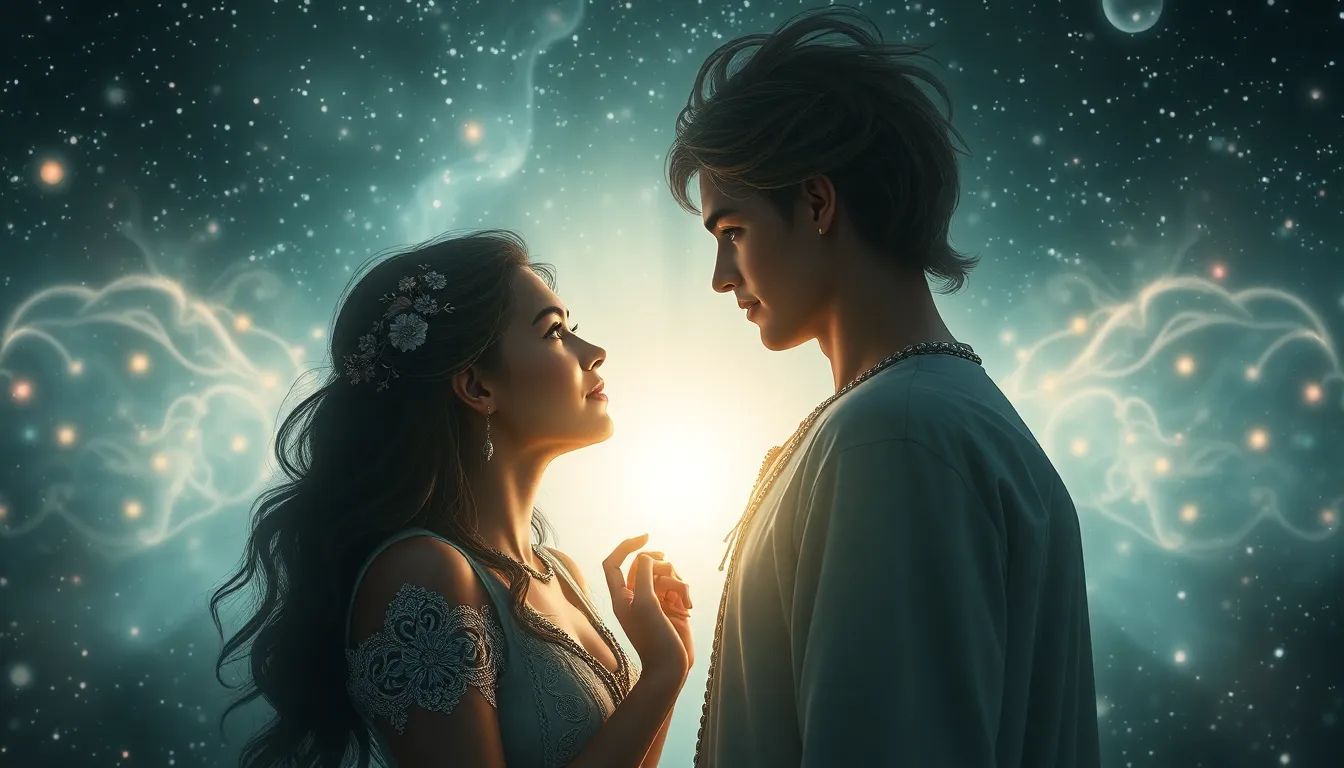Enchanting Encounters: How Myths Portray Love at First Sight
1. Introduction: The Allure of Love at First Sight
Love at first sight is a captivating phenomenon often described as an instantaneous and profound emotional connection between two individuals upon their first meeting. This concept is not merely a modern romantic ideal; it has deep roots in myths and folklore across various cultures. Love at first sight signifies the idea that true love can occur instantaneously, transcending time and space, making it a powerful theme in storytelling.
The purpose of this article is to explore how myths portray love at first sight, examining its significance, historical context, and the psychological underpinnings that make this concept so enchanting. We will delve into various cultures, iconic myths, and the lessons they impart about love and relationships.
2. The Historical Context of Love at First Sight in Mythology
Ancient civilizations have long interpreted love in unique ways, often intertwining it with their cultural beliefs and values. The concept of love at first sight was influenced by these interpretations, shaping its portrayal in myths and stories.
- Ancient Greece: The Greeks believed in the influence of the gods on love, with deities like Eros and Aphrodite embodying the power of attraction and desire.
- Ancient Rome: Roman mythology similarly celebrated love’s capricious nature, where divine intervention often played a role in romantic encounters.
- Eastern Traditions: In Asian cultures, love at first sight is sometimes viewed through the lens of fate and destiny, where individuals are believed to be predestined to meet and fall in love.
These interpretations reflect a broader understanding of how instantaneous attraction is viewed across different cultures, often as an act of fate or divine will.
3. Iconic Myths Featuring Love at First Sight
Several prominent myths encapsulate the theme of love at first sight, each presenting unique narrative structures and themes.
- Eros and Psyche: This Greek myth tells the story of Eros, the god of love, who falls for Psyche at first sight. Their love story is filled with trials and tribulations but ultimately highlights the triumph of love.
- Romeo and Juliet: Shakespeare’s iconic play portrays the intense and tragic love between two young lovers who experience a deep connection instantaneously, leading to a series of fateful events.
In both stories, fate and destiny play crucial roles, emphasizing how love at first sight can alter the course of lives forever.
4. The Psychological Perspective: Why We Believe in Love at First Sight
From a psychological standpoint, love at first sight can be explained through various theories related to attraction. Factors such as pheromones, body language, and first impressions play significant roles in how we perceive others.
- Pheromones: These chemical signals can influence attraction on a subconscious level, creating a sense of familiarity or connection upon first meeting.
- Body Language: Non-verbal cues often communicate attraction and interest, which can lead to an instant emotional response.
- First Impressions: The initial impression formed during the first meeting can have a lasting impact, often overshadowing other factors in later interactions.
This connection between mythology and human psychology illustrates why love at first sight resonates so deeply with people across different cultures.
5. Cultural Variations: Love at First Sight Across the Globe
The portrayal of love at first sight varies significantly across cultures, reflecting different societal norms and values.
- Western Myths: Often emphasize individualism and passionate encounters, such as in the stories of Tristan and Isolde.
- Eastern Myths: Frequently highlight the role of fate and familial duty, as seen in tales like the Chinese legend of Liang Shanbo and Zhu Yingtai.
This comparative analysis reveals how the same theme can be interpreted in vastly different ways, depending on cultural context.
6. The Role of Fate and Divine Intervention in Mythical Love Stories
Fate and divine intervention are recurring themes in mythical love stories, often guiding the characters toward their destined encounters.
- Greek Myths: The concept of Moirai or Fates illustrates how predetermined paths influence love and relationships.
- Roman Myths: Deities like Venus often intervene in human affairs, leading to unexpected romantic connections.
These examples highlight the belief in a higher power influencing love, reinforcing the idea that some relationships are meant to be.
7. Love at First Sight vs. Love That Grows: A Mythological Dichotomy
Myths often contrast love at first sight with love that develops over time, illustrating the tension between these two forms of attraction.
- Instantaneous Attraction: Many myths celebrate the beauty of immediate love, portraying it as magical and transcendent.
- Gradual Love: Other narratives emphasize the depth and richness of love that develops slowly, suggesting that true love requires time to flourish.
This dichotomy provides valuable insights into the complexities of romantic relationships and the diverse ways love can manifest.
8. Lessons and Morals from Mythical Love at First Sight
Myths impart key lessons about love and relationships, often highlighting the importance of choice and the consequences of impulsive decisions.
- True Love Requires Effort: Many stories suggest that while love may begin at first sight, maintaining that love requires commitment and hard work.
- Be Cautious of Fate: The intervention of fate can be both a blessing and a curse, teaching us to be mindful of our choices.
These lessons remain relevant in contemporary life, shaping our understanding of love and relationships.
9. The Evolution of Love at First Sight in Modern Culture
The concept of love at first sight has evolved significantly from ancient myths to contemporary culture, finding its place in literature, film, and social media.
- Contemporary Literature: Modern novels often explore the theme of love at first sight, delving into characters’ emotional journeys.
- Film and Television: Romantic comedies frequently depict love at first sight as a central plot element, reinforcing its allure.
- Social Media: Platforms like Instagram and TikTok have magnified the phenomenon, creating instant connections that mimic the mythological ideal.
This evolution demonstrates the lasting impact of myths on our perceptions of love, continuing to shape how we experience and understand romantic relationships today.



